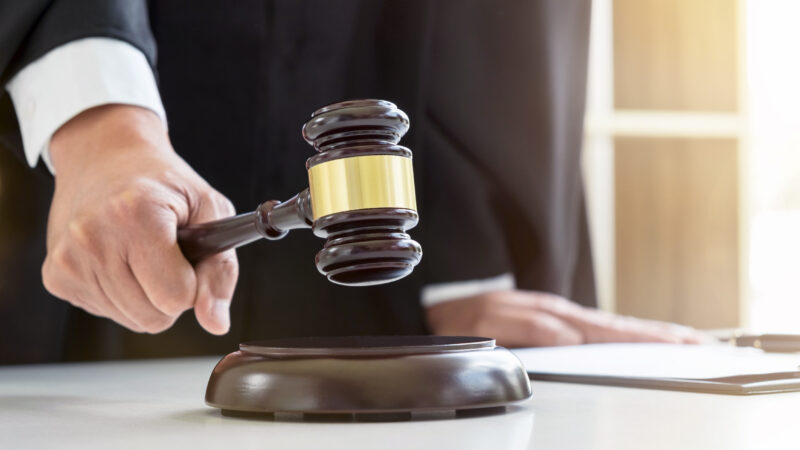How will Trump’s executive order affect the Smithsonian?
The Trump Administration has been moving quickly to eliminate what it considers “woke ideology” from the country’s arts and culture institutions.
On Thursday, President Trump signed an executive order that targets two recipients of federal funds: The Smithsonian Institution, a vast collection of research centers, museums and galleries, including the Air & Space Museum and the American Art Museum; and the monuments and memorials overseen by the Department of the Interior.
What does the order say?
The order is called “Restoring Truth and Sanity to American History” and the White House says the goal is “revitalizing key cultural institutions and reversing the spread of divisive ideology.”
It says that the Smithsonian promotes “narratives that portray American and Western values as inherently harmful and oppressive.”
But Jim Grossman, the executive director of the American Historical Association, says, “It misrepresents the work of the Smithsonian, which is one of the great research institutions in the world. Arguing that the Smithsonian somehow misleads people, somehow is unpatriotic, somehow is saying things that are not true. That’s simply not true.”
Yet the order directs Vice President JD Vance — who is on the Smithsonian’s board — to eliminate “improper, divisive, or anti-American ideology” from the museums, and to work with Congress to keep from funding exhibits or programs that “divide Americans by race.”
It singles out the forthcoming American Women’s History Museum, which does not yet have a physical building, and orders that it does not “recognize men as women.” This is how the Trump Administration has been referring to transgender women. An exhibit the museum curated, which is currently at the National Museum of American History, includes a T-shirt from a trans, non-binary athlete.
The executive order also directs the Department of the Interior, which oversees the National Parks and other public lands, to restore markers, statues and other memorials that have been “improperly removed or changed in the last five years to perpetuate a false revision of history or improperly minimize or disparage certain historical figures or events.”
Five years ago, in 2020, statues around the country were defaced or demolished as part of the Black Lives Matter protests. But national parks and historic sites around the country also have revised their messaging to reflect a more complicated understanding of American history, which includes not only American achievements but also the country’s underbelly, like the slaveholding of the Founding Fathers, the invisibility of LGBTQ people throughout much of history, and the taking of Native American land.

What is possible for the administration to do?
The Smithsonian isn’t a federal agency — it’s a public-private partnership. But it does receive federal funds, and its employees are a mix of civil servants and people with “trust fund positions,” which are roles funded through sources that include business activities and grants.
Its governing body is a Board of Regents, whose members include the Vice President, the Chief Justice of the United States, three Senators, three Representatives and nine citizens. In the executive order, Trump said Vice President JD Vance would work with Congress to appoint citizens who were broadly in agreement with the order.
It is not clear what power the administration currently has over the Board of Regents, but the order ties future funding to compliance.
What is the Smithsonian’s response?
The Smithsonian has not yet released a statement.
But in response to a January executive order from President Trump, which forbid organizations receiving federal funds from operating Diversity, Equity and Inclusion programs, it did close its diversity office.
Auburn tabs USF’s Alex Golesh as its next coach, replacing Hugh Freeze on the Plains
The 41-year-old Golesh, who was born in Russia and moved to the United State at age 7, is signing a six-year contract that averages more than $7 million annually to replace Hugh Freeze. Freeze was fired in early November after failing to fix Auburn’s offensive issues in three seasons on the Plains.
Alabama Power seeks to delay rate hike for new gas plant amid outcry
The state’s largest utility has proposed delaying the rate increase from its purchase of a $622 million natural gas plant until 2028.
Former U.S. Sen. Doug Jones announces run for Alabama governor
Jones announced his campaign Monday afternoon, hours after filing campaign paperwork with the Secretary of State's Office. His gubernatorial bid could set up a rematch with U.S. Sen. Tommy Tuberville, the Republican who defeated Jones in 2020 and is now running for governor.
Scorching Saturdays: The rising heat threat inside football stadiums
Excessive heat and more frequent medical incidents in Southern college football stadiums could be a warning sign for universities across the country.
The Gulf States Newsroom is hiring an Audio Editor
The Gulf States Newsroom is hiring an Audio Editor to join our award-winning team covering important regional stories across Mississippi, Alabama and Louisiana.
Judge orders new Alabama Senate map after ruling found racial gerrymandering
U.S. District Judge Anna Manasco, appointed by President Donald Trump during his first term, issued the ruling Monday putting a new court-selected map in place for the 2026 and 2030 elections.









